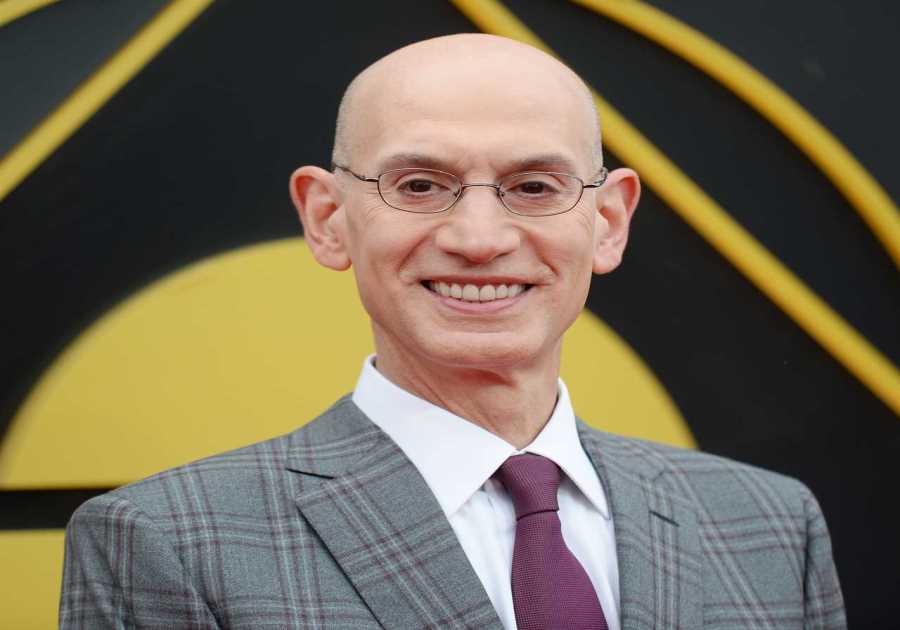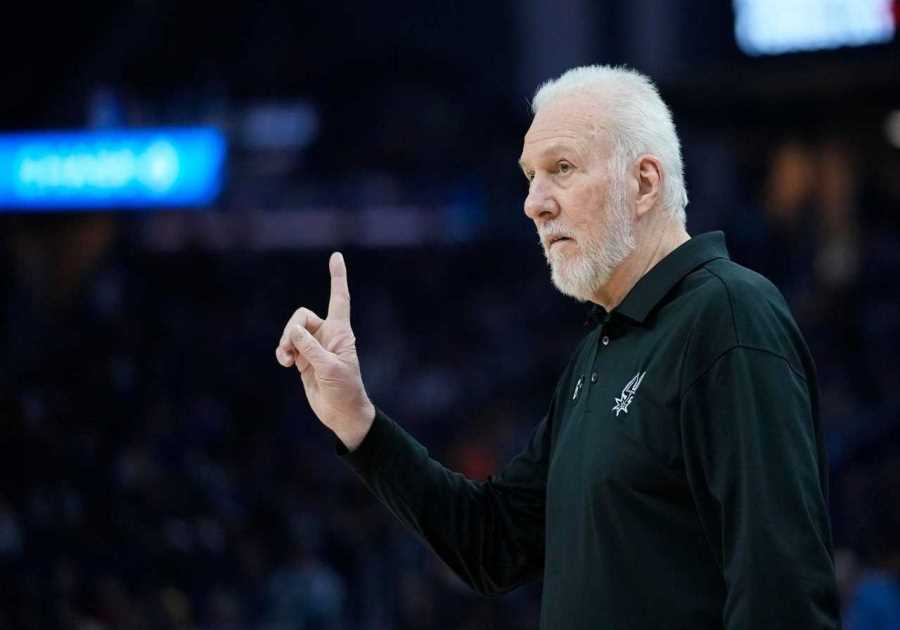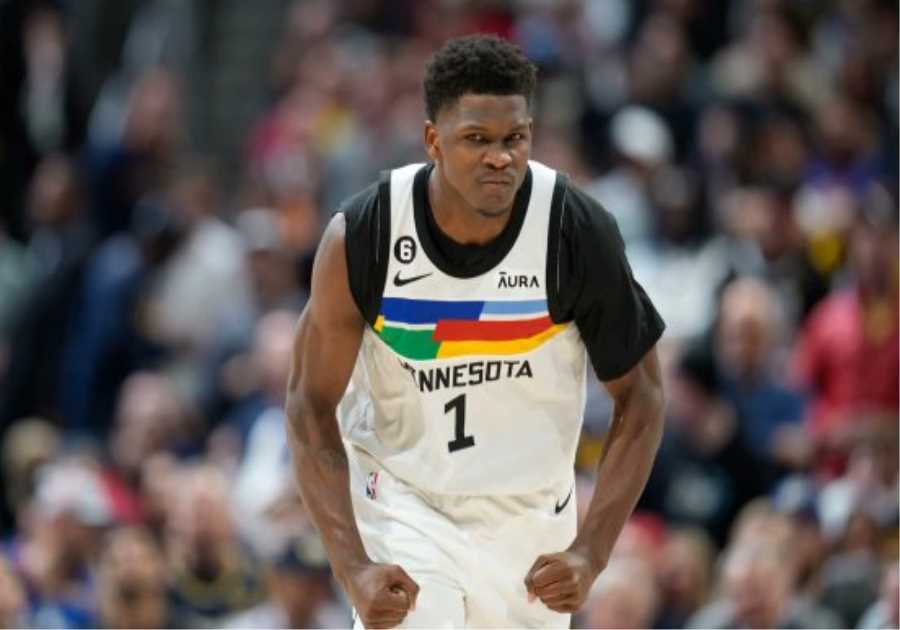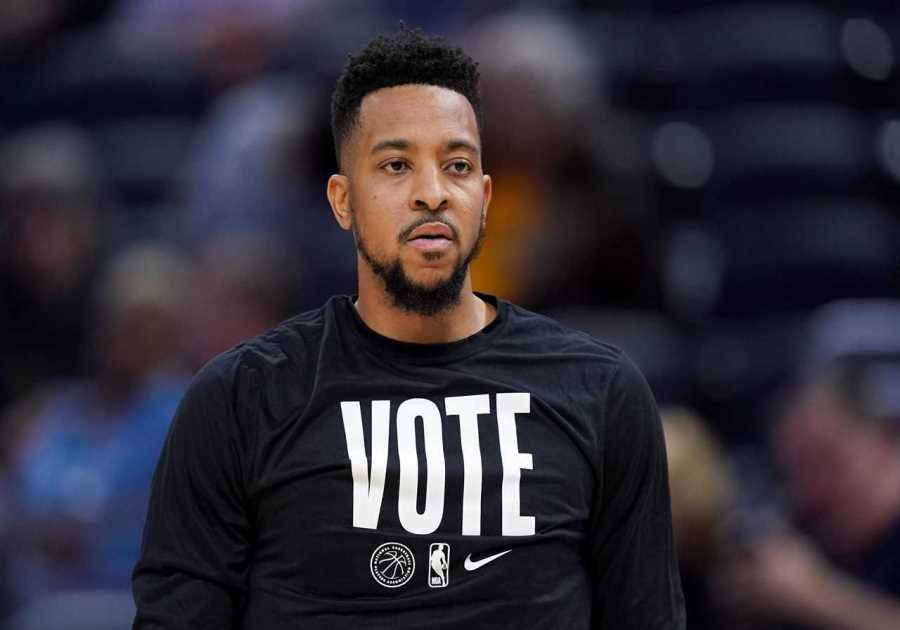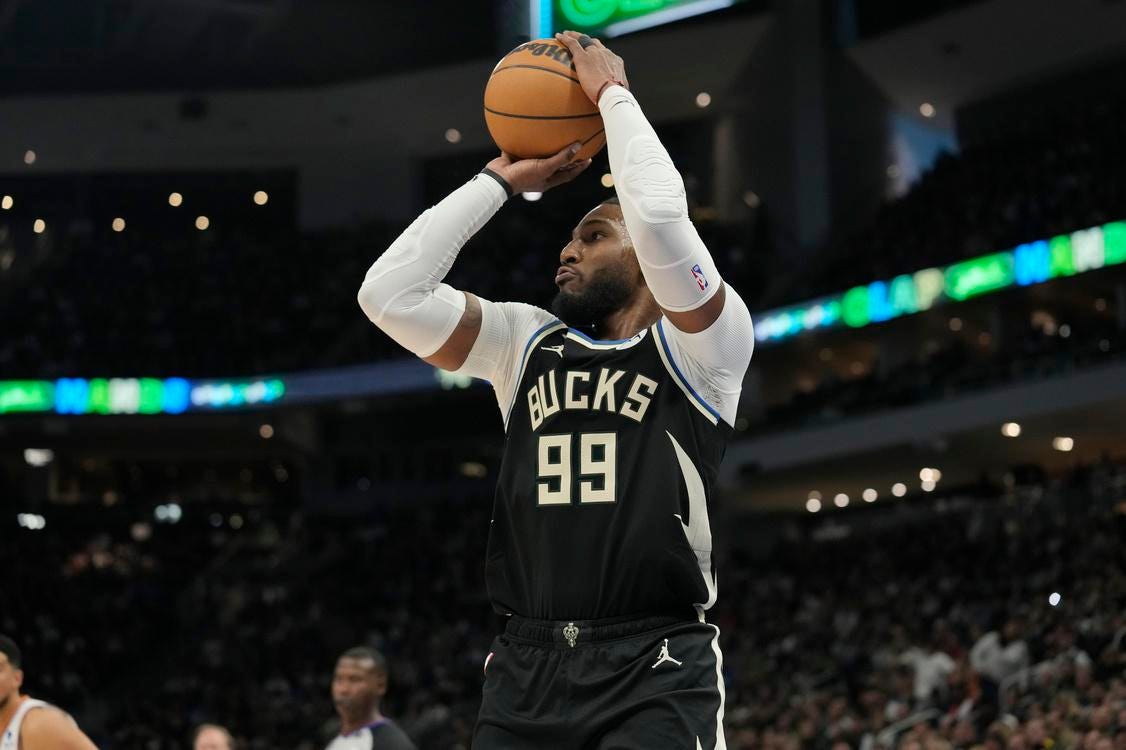
MILWAUKEE, WISCONSIN - FEBRUARY 26: Jae Crowder #99 of the Milwaukee Bucks shoots the ball against ... [+] the Phoenix Suns in the second half at Fiserv Forum on February 26, 2023 in Milwaukee, Wisconsin. NOTE TO USER: User expressly acknowledges and agrees that, by downloading and or using this photograph, user is consenting to the terms and conditions of the Getty Images License Agreement. (Photo by Patrick McDermott/Getty Images)
Getty ImagesWith 4:30 remaining in Sunday’s nationally televised game between the Milwaukee Bucks and the Phoenix Suns, Milwaukee was trailing by six and in danger of losing their first game in a month. Superman wasn't coming to the rescue with Giannis Antetokounmpo sidelined with a knee injury.
Milwaukee was grinding offensively and had only put up 88 points on the scoreboard in a little over three and a half quarters. That’s when they peeled back the curtain on a secret that will help catapult their offense into respectable territory and another deep postseason run: Corner threes.
The Bucks mandate the corner as a staple of their offense. Head coach Mike Budenholzer infamously tapes blue squares on the practice court to emphasize which areas he wants his players to fill every time down. It’s evolved a bit over the years, but two of the constants are the corners.
According to Cleaning the Glass, Milwaukee ranks ninth in the NBA in the frequency of corner threes attempted, with about one in 10 shots coming from those spots on the floor. The only issue is they suck at making them, as only four teams have a worse percentage on the season.
This is part of why their offense is slacking, which has seen the fruits of its labor dry up after years of sporting a top-ranked regular season unit. Milwaukee ranks in the middle of the pack in effective field goal percentage and the bottom half in offensive rating.
Back to Sunday’s matchup, with the Bucks trailing 88-94, Brook Lopez set a ball screen for Jrue Holiday at the top of the key, temporarily removing Holiday’s man from the play. This gave Milwaukee a temporary five-on-four advantage as Holiday whipped an overhead pass across the court to Khris Middleton on the left wing.
With Middleton’s defender diving into the paint to take the rolling Lopez, Jae Crowder was vacated in the left corner, as his man sprinted to challenge a potential Middleton three. Only Middleton immediately shoveled the rock to Crowder for a wide-open three. Splash. Three-point game.
The Bucks worked the corner magic again on the very next play. Middleton scooped up a missed Holiday three that seemed to bounce forever before attacking the hoop. This sucked in the Suns’ defense and allowed him to throw a semi-no-look pass to Crowder in the corner for another open three. Yak Yak!
Crowder was brought in for his switchable defense and ability to help the Bucks match up against teams like the Celtics in the postseason. However, he’s also a corner three aficionado, knocking down at least 40 percent of said shots in each of the last three years. He should provide a boost on that spot on the floor.
The Bucks need the corners to space the floor for the world’s best player, Antetokounmpo. Defenses love to build the wall with help defenders and force him to get the ball out of his hands. That defensive strategy works if Milwaukee can’t maximize their shooters and knock down shots—a seemingly annual postseason tradition they’ve participated in under Budenholzer.
One of their go-to sets is an inverted pick-and-roll with Antetokounmpo as the ball-handler, two guys in the corner and one in the weakside dunker spot. In the below example, it’s Pat Connaughton setting the screen, Crowder in the short corner, and Jevon Carter and Grayson Allen out wide.
Antetokounmpo decides to reject the screen and attack the basket on his lonesome. He shrugs off the first defender, forcing Nic Claxton to leave Crowder on the weakside block and meet Antetokounmpo just outside the restricted area. His help forces Seth Curry to abandon Carter in the weakside corner and slide down to prevent an easy dump off for a layup. Antetokounmpo reads all this and shovels the rock to the open shooter for three.
When the Bucks push the pace, two of the very first spots they fill are also the corners. This is for two primary purposes: 1. It maximizes the spacing on the floor, forcing defenses to cover every possible inch, and 2. It has the highest rate of return of any non-dunking spot on the floor.
By now, everyone knows threes are one of basketball's two most potent shots (shots directly at the rim being the other). But did you know corner threes are made at a three percent higher clip than non-corner threes? According to Cleaning the Glass, the average three-point success rate on corner threes is 38.6 percent compared to 35.6 percent for non-corner threes.
Above is a great example of how they operate in the open court. Crowder has a steal and three running mates on a fastbreak. He dumps the ball off to Middleton to steer the attack, while Bobby Portis and Joe Ingles fill their respective corners. As Middleton engages one of the three Brooklyn Nets’ defenders, he notices a two-on-one advantage to his left. With Crowder filling the left wing and Ingles sliding down to the left corner, Joe Harris is forced to pick his poison. He rightly steps up to Crowder when he receives the first pass, but cannot stop the ball from finding an open Ingles for a spot-up three.
NBA.com
NBA.comMilwaukee’s offense has struggled all season long. Injuries can be pointed to as one of the primary reasons, and you wouldn’t be wrong. Their shooting is another key cause for concern.
The corner three is a major weapon that can be unleashed on defenses to make them pay for sending extra help to the ball. The Bucks can use it to spread defenses the entire width of the court, and make them think twice before running into the paint to prevent a shot at the rim.
The wins are nice. What’s even nicer is another Larry O’B. Everything the Bucks do now is focused on getting better and setting themselves up for postseason success. The secret to their success might lie in knocking down more threes from the most obscure spot on the court. Corner Magic.
Brian Sampson, Contributor
https://www.forbes.com/sites/briansampson/2023/03/01/corner-threes-are-secret-sauce-for-milwaukee-bucks-offensive-success/
By: Brian Sampson, Contributor
Title: Corner Threes Are Secret Sauce For Milwaukee Bucks’ Offensive Success
Sourced From: www.forbes.com/sites/briansampson/2023/03/01/corner-threes-are-secret-sauce-for-milwaukee-bucks-offensive-success/
Published Date: 03-02-2023
Frequently Asked Questions
Who holds the record for most career playoff wins in the NBA?
LeBron is one of today's most sought-after basketball stars, having won an incredible 174 NBA Playoffs wins and played 266 games.
When did Bill Russell pass away?
"The great ones do what is most important" - Bill Russell
A legend lives forever. When he stops playing, a legend dies.
But, for those few minutes, the greatest player in basketball gave us a glimpse to his greatness.
Russell was conceived in February 1934. He passed away on July 31, 2022. He won 11 championships with the Boston Celtics in only 13 seasons.
Bill Russell was awarded five MVP awards, 12 All-Star selections, and inducted into the Basketball Hall of Fame. His passion for winning made him a great leader and defender.
He transformed the Celtics' team from one of the worst in sports history to another. He was a fierce competitor and unselfish teammate who inspired his teammates to reach their potential.
Russell has inspired generations upon generations of coaches, players, and fans. His legacy will not be forgotten.
Bill Russell, Rest in Peace. We will forever remember you as one of basketball's greatest players.
What is a restricted agent free in NBA?
An NBA restricted-free agent is a player whose rookie contract has been completed and who becomes an unrestricted, free agent. However, their rights are still owned by their previous team. In this situation, the team has the right to match any offer sheet another team gives to the player. The player can choose to match any offer made by another team. However, they must stay with the previous team and honor their contract. This allows teams retain players who are proven valuable, but cannot afford them because of their salary caps. This type of restricted free agent can give teams valuable flexibility in building their rosters.
How long can a waiver-bound player remain?
A waiver is a condition in which a NBA player is released by their team at any time during the season. Waived players have 48 hours to be claimed by another team. If more teams claim the player during that time, priority goes the team with poorest record.
Statistics
- As of 2014, 45 percent of its viewers were black, while 40 percent were white, making it the only top North American sport that does not have a white majority audience.[102]As of 2017Democrats than Republicans.[103]Outside (en.wikipedia.org)
- The 2013–14 season opened with 92 international players on the opening night rosters, representing 39 countries and over 20% of the league. (en.wikipedia.org)
- An estimated 800 million viewers watched the [105]2017–18 season. (en.wikipedia.org)
- "NBA first-round ratings drop 27 percent, 40 percent since 2017–18". (en.wikipedia.org)
- Meanwhile, the opening night rosters include a record-setting 234 players with some G League experience, according to the NBA ( Twitter link ). (hoopsrumors.com)
External Links
sports.yahoo.com
- Yahoo Mail, Weather, Search & Videos
- NBA Finals Game 1 has the lowest recorded viewing figures in history.
nba.com
twitter.com
- Tweet / Follow Twitter
- Sam Amico on Twitter: "Timberwolves Waive PJ Dozier, CJ Elleby and AJ Lawson - Hoops Wire https://t.co/xKu1ZTuQZN" / Twitter
basketball-reference.com
- Thomas Bryant Stats, Height, Weight, Position, Draft Status and more | Basketball-Reference.com
- Dennis Schroder Stats, Height, Weight, Position, Draft Status and more | Basketball-Reference.com
How To
What is the best method to get drafted into NBA?
There are two ways to become a NBA player: high school or college.
NCAA schools include Duke University, North Carolina State University and the University of Kentucky for college students. These schools offer four-years of education and training. These schools offer four years of education and training. They learn how to run an offense and defense. They also learn how to be a professional athlete mentally.
High school players attend prep schools outside of their home states. These schools are focused on talent development and provide athletes with personalized attention. Students are taught how to be a good student, develop character, and practice sportsmanship.
Both types of players must pass the same physical tests before they are allowed to enter the draft. The test involves running 40m, jumping over a 5ft6" box, standing on 1 leg, and throwing the football through a tire.
Players who pass these tests are then invited to participate in workouts at different NBA teams. The teams evaluate players based upon their height, weight and wingspan.
Teams also look at their previous experience. For instance, if a player has played AAU basketball, he will likely receive preferential treatment.
Some players are considered too small for professional play and are known as "one-and done" prospects. These players are usually selected in the second round.
Some players will skip college to go straight to the NBA. These players are called "prospects." Prospects don't need to wait until the end of the year to declare themselves eligible for the draft.
They may apply for an exemption in order to be permitted to join the draft earlier. If a prospect does this, he can compete with other prospects during the predraft process.
Summer leagues are a great way for prospects to increase their chances of being selected. Summer league games take place in July and August.
Scouts can see players live without having to worry about injuries.
June is the NBA Draft. This is when all top prospects are evaluated by the 30 NBA teams. Each team gets a certain number of picks within each round.
For example, the first pick in the first round is the 15th overall selection. In the third round, the 20th selection is the 60th pick.
After the draft, teams trade to make their rosters complete. Some teams even hold mini-camp tryouts inviting potential draftees to train with them.
Draft day is exciting! What happens next?
There is no waiting around for your name to come up once the draft has begun. Each NBA team picks a player from the pool.
Once a team selects a player, it sends him a contract that outlines his salary, playing time, and benefits. He becomes an employee of the company.
A jersey with his name on it and a uniform featuring his new nickname are also included.
Finally, he signs his contract. This means that he has officially joined the NBA.

